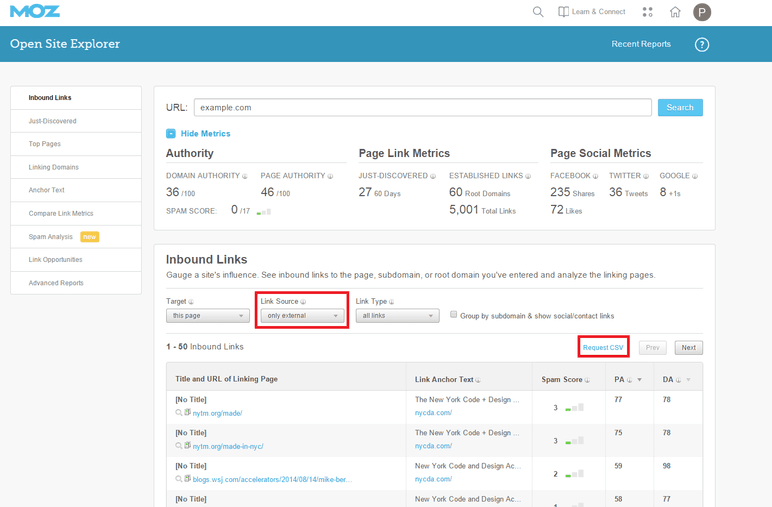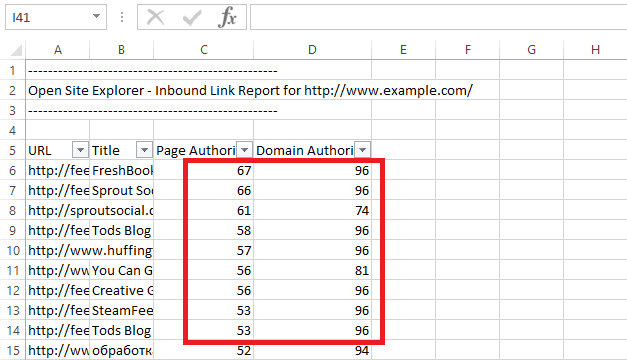How To Clean Up Your Site’s Faulty Backlinks in 7 Steps

According to Carolyn Shelby, director of SEO at Chicago Tribune/435 Digital, SEO is a site’s basic foundation for success. In her analogy stressing the importance of SEO, Shelby asserts, “skipping the basics and spending all your time and money on social and ‘fancy stuff’ is the same as skipping brushing your teeth and showering, but buying white strips and wearing expensive cologne.”
Shelby’s analogy is awesome–but I’m going to add to it. There are both on-site and off-site search engine optimizations; on-site optimizations encompass strategies that exist on the website itself, like using valuable keywords and title tags. Off-site optimizations include strategies outside the website, like backlinking and email marketing. If on-site optimizations are like brushing teeth, off-site optimizations are like flossing. They go hand-in-hand for a good dental hygiene regimen. Just like your dentist reminds you to floss, it’s essential to include off-site optimizations in your SEO for a healthy, successful site.
In this post, I’m going to explain one of the most important aspects of off-site SEO: backlink analysis. Of course, a guide to backlink analysis is a little more complex than teaching someone how to floss. But don’t worry–it’s not hard either. Once you understand how to perform backlink analysis, your site will be clean, healthier, and appealing to users and crawlers alike. (Okay, maybe my extended analogy is a little less suave than Shelby’s, but stay with me.)
What are backlinks?
Backlinks, or inbound links, are created when external sites link back to your website. Backlinks are essential ranking factors especially if they are from trusted, reputable sources. Positive backlinks not only increase your domain’s value in the eyes of the search engine, but they also drive more referral traffic.
Negative backlinks are created when spammy, low quality, or irrelevant external sites link back to your website. These types of faulty backlinks occur when a website that is just set up for manipulative SEO adds your websites to its link network. Another example of bad backlinking is when spambots link your website in comment sections of external websites. You definitely don’t want negative backlinks; they’re sort of the cavities of the SEO world.
Below you’ll find a quick guide to help you clean up faulty backlinks on your site. (I was going to make another flossing analogy/joke here, but I refrained. You’re welcome.)
Checking for bad backlinks with Moz Open Site Explorer
One of my favorite tools for analyzing backlinks is Moz Open Site Explorer. This tool allows you to research and compare backlinks with competitors for intelligent targeted link building. (Note: Moz Open Site Explorer isn’t a free tool, but it’s so worth it. Check out pricing options here.)
Step 1. Log into Open Site Explorer and input your web address.
Step 2. Pull Inbound Links Report (select external only) and choose Request CSV.
Step 3. Filter by URL, Title, & Domain/Page Authority in Excel.
Links with high Domain Authority and high Page Authority are more likely to be positive.
Conversely, links with low Domain Authority and low Page Authority are more likely to be negative. Of course, it’s in best practice to manually check the link to confirm that it is, in fact, spammy.
Step 4: Highlight the spammy backlinks for removal.
Getting rid of faulty backlinks with Google WebMasterTools Disavow Tool
Once you have identified your spammy backlinks, you will create a text file to be submitted to Google’s Disavow Tool. This text file communicates the backlinks that need to be removed, or disavowed.
Step 5: Create a .txt file for faulty backlinks, add faulty backlink domains, and save file.
Step 6: Log into your Google WebmasterTools account or Gmail. Go to the disavow links tool page. Assuming you have your website linked to Google WebmasterTools, select your site’s account and click Disavow Links.
Step 7: You will see a pop-up window with Disavow links message and the option of uploading the txt file. Click on “Choose the file” and upload “example.com-disavow links.txt” file.
If the .txt file is successfully uploaded, you will see the message similar to this:
“Results for the submission on March 24, 2015 7:54:14 PM UTC+4 You successfully uploaded a disavow links file (list of links to example.com-disavow links.txt) containing 11860 domains and 0 URLs.”
Ta-da! You now know how to successfully remove faulty backlinks from your site and uphold your site’s overall health. It’s arguably more steps than flossing, but just as important. (Well, don’t tell that to your dentist. You should definitely do both.)
—
Do you have other tips for removing negative backlinks? Are you a fan of extended analogies? Comment in the section below, email us at info@perfectsearchmedia.com, or tweet at us @perfect_search!






